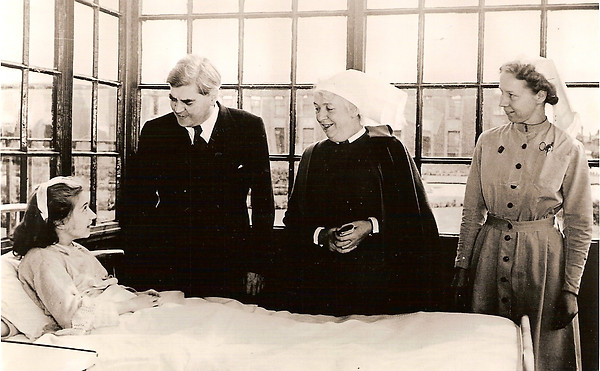
Ilford and the Xray
Part Two - The NHS
By Daisy Marsh
On 6th May 1949, just under a year after the National Health Service was born, the Health Minister wrote a memorandum which sounds familiar from reports on the NHS today:
‘Unless we are to deprive people of services they genuinely require, we cannot expect the costs for this service to be as low as we had hoped.’
What this document suggests is that the NHS had not even been running for a year before it’s funding became an issue. This was not just about money either, it was also about resources. The same Health Minister is under pressure in a House of Commons debate on the 14th July the same year, being interrogated over the shortage of x-ray film in hospitals. He admits: ‘there is a general shortage of x-ray film and I have had to ask hospitals to economise in their use.’
At Ilford Limited, they were also feeling the impact of the introduction of the NHS. An Ilford representative is quoted in 1953 by several newspapers: ‘Up to the introduction of the NHS we were able to keep up with the demand for x-ray film. Within a few months of its introduction, however, we found that orders far outstripped production.’ The Times reports the actual statistics from the Ministry of Health – in 1948, the first year of the NHS, 11,700,000 square feet of x-ray film was used. By 1952, this had increased to 16,000,000. Many of the newspapers of the time agree: ‘the demand for x-ray film has expanded considerably since the NHS started’ and it is described as having ‘handicapped British hospitals and slowed medical research.’

Anenurin Bevan, Minister of Health, on the first day of the National Health Service, 5 July 1948 at Park Hospital, Davyhulme, near Manchester
Part of the problem was the fact the base needed for x-ray film had to be purchased in the United States, as it was not made in Britain. This was expensive and a drain on Britain’s already dwindling dollar reserves. Having identified this challenge, however, Ilford Limited proceeded to propose a solution. On 20th January 1953, they announced a joint venture with Bexford Limited, with whom they co-owned a company called BX Plastics. They proposed to turn the BX Plastics factory at Manningtree in Colchester over to making the base needed for the x-ray film, making them the first company to produce this product in the UK. This base would then be used by Ilford Limited to make their x-ray films.
Press cuttings from the time suggest that the response to this project was very positive. Of course, as a business decision, it helped Ilford start to keep up with the orders, but the press also report this as an altruistic project in the spirit of the Welfare State. Two key benefits are identified, the first being that it will end the shortage of x-ray film, thus supporting the NHS and ‘shorten[ing] the queues for x-rays’, allowing consultants to freely recommend them again and conditions to be diagnosed earlier.
The second key benefit identified and widely reported is the saving of dollars in a national situation where (as many contemporary articles put it) ‘the future of stability in this country depends so largely on saving dollars.’ The Financial Times puts the potential savings at $1 million a year – an important amount given the strength of the dollar and the debt that Britain owed America after the war. The resulted increase in x-ray film is not just linked to benefitting the NHS, but also to allowing Ilford to begin to have enough stock to export freely again, something which will also bring in dollars.
The effort this venture required implies that the x-ray business was a key market for the company. However, as with the Mass Miniature Radiography program, which boosted Ilford’s production in the war, this x-ray project once again closely links the improvement of both business and public health in a way that it would perhaps be nice to see in the NHS’s current time of struggle.
Sources:
Book of Press Cuttings held in the Ilford Limited archive at Redbridge Central Library and Archive
The National Archives Cabinet Papers 1918-88 [nationalarchives.gov.uk] accessed 24th July 2016
Hansard Parliament Archives accessed 24th July 2016 – in particular Volume 467


